The over under shotgun dominates the break-action category today. The majority of hunters and all but a very few target shooters prefer the narrow-sight picture of an O/U to the wider view down the barrels of a side-by-side.
Over unders are so popular today, you could be forgiven for thinking the earliest two-barreled shotguns always had one barrel over the other. And as gas and inertia semi-autos with more capacity have become overwhelmingly popular among hunters, it’s easy to think of the over under shotgun as an aging relic.
In fact, none of that is really true. Side-by-sides came first, and pumps were in widespread use at the end of the 19th century (the first successful semi-auto was designed in 1898). The O/U is actually a product of 20th-century gun design and came from the mind of the most prolific gun designer and inventor in history.
Shooting an Over Under Shotgun vs. Shooting a Side-By-Side

Most shooters seem to believe that an O/U’s sighting plane gives it the advantage on clay targets — which fly a predictable course — and on any target shot against a fairly open background, such as pheasants in grasslands or mourning doves against the open sky.
Side-by-sides are usually lighter than comparable O/Us, and side-by-side shooters believe the gun is better for instinctive shooting and for shooting in heavy brush, where the wide barrels of the side-by-side stand out in your peripheral vision.
For what it’s worth, the English side-by-side game gun, seen by many as the greatest shotgun ever made, was designed for shooting pheasants and grouse driven over the shooters by an army of beaters. Today, the traditional side-by-side is no longer the gun of choice for driven shooting — it has been replaced by O/Us.
GOOD GEAR – Launch Your Mornings Into Orbit With the BRCC Space Bear Roast
John Browning Stacking Barrels

For many years, the side-by-side was not just the most popular double-barreled shotgun, it was the only double-barreled shotgun anyone could get. While gunmakers experimented with over-under barrel arrangements, they decided the side-by-side was the better design because, at the time, shotguns had exposed external hammers. As long as guns had external hammers, it was easier to devise firing mechanisms for guns with their barrels next to one another.
With the advent of hammerless guns in the latter half of the 19th century, gunmakers were suddenly free to experiment with O/U designs. The earliest examples were expensive custom guns made in the early 1900s, priced far out of reach of the average hunter.
It wasn’t until the late 1920s that the great gun designer John Browning began work on an over under shotgun. More than any other gun, the Browning Superposed made the O/U as popular as it is today, and it wasn’t introduced until 1931. What’s more, it didn’t truly take off until after World War II.
RELATED – 10 Gauge Shotgun: Is There a Reason for It to Still Exist?
How Changes in Bird Hunting Created Double-Barrels

Most early guns, smoothbore and rifled alike, were single-barreled, which made sense due to the weight of the extremely long barrels required to generate any velocity with black powder.
Even in the flintlock era, the most popular form of hunting shotgun was the “long fowler,” a single-barreled gun, often with a 16-gauge diameter, with a barrel length of 50 inches or more. Fowlers were often used for shooting birds on the water.
The trend toward wingshooting began on the European continent and moved to England in the late 1700s. As bird shooting changed from shooting at birds on the ground or water to trying to hit them in the air on the move, hunters wanted guns that could be fired more than once — either to follow up on a miss or to shoot a double (or “right and left,” as in one bird with the right barrel, a second with the left).
So, two-barreled guns became popular, and almost all of them side-by-side. Gunmakers found it difficult to design locks that would reliably fire top and bottom barrels, while it was comparatively easy to make a side-by-side exposed-hammer gun.

By the end of the 18th century, side-by-side flintlocks had improved enough that author, shooter, and naturalist George Montagu could write that “the art of shooting flying has arrived at tolerable perfection” in 1792.
Despite Montagu’s pronouncement, there were more changes to come that would eventually usher in the era of the over under shotgun.
GOOD GEAR – Show Your Love for America’s Coffee With the BRCC Paramug Company Logo Long Sleeve
Why Over Under Shotguns Just Didn’t Work for So Long
Percussion caps replaced flint and loose powder in the early part of the 19th century. Some makers did experiment with O/U designs — Beretta built an O/U percussion muzzleloading shotgun in the mid-19th century that might have disappeared from memory altogether had the company not reintroduced it in 1980 as a limited tercentennial commemorative gun.
Throughout the muzzleloading era, O/Us remained rare. Percussion systems still required exposed hammers, as did early cartridge guns, and as long as guns needed external hammers, the side-by-side was the easier gun to engineer. You simply couldn’t set hammers directly behind both barrels in an O/U design.

In 1875, the Anson and Deeley hammerless shotgun were introduced in England. It wasn’t truly hammerless, of course. It had hammers, but they were enclosed inside the action. While internal hammers made building O/Us easier, there were still challenges to overcome.
Because the firing pins had to be at different angles inside the body of an O/U to fire a top and a bottom barrel, it was hard to make a gun that would shoot both barrels reliably. And designing a mechanism to keep the action locked closed was difficult without making an overly tall, ungainly receiver. The taller the action, the harder it is to open for loading and, more importantly, reloading, especially in a blind.
In 1909, British gunmaker Thomas Boss introduced an O/U that solved the problems of an overly deep action. Rather than having the barrels rotate on a hinge pin beneath the barrels, the Boss guns had trunnions on the lower barrel that hooked into the frame, keeping the action’s height low and helping make the gun light, trim, and lively.
The Boss’ designers were able to minimize the difference in angle between the bottom and top firing pins, too, for reliable ignition. The only problem with the Boss, and with the Woodward O/U that soon followed, was cost. It was a handmade, custom gun, and therefore priced way out of reach for the average hunter.
RELATED – Military Shotguns: The History of Scatterguns Issued by the U.S.
The Browning Superposed Over Under Shotgun Hits the Scene
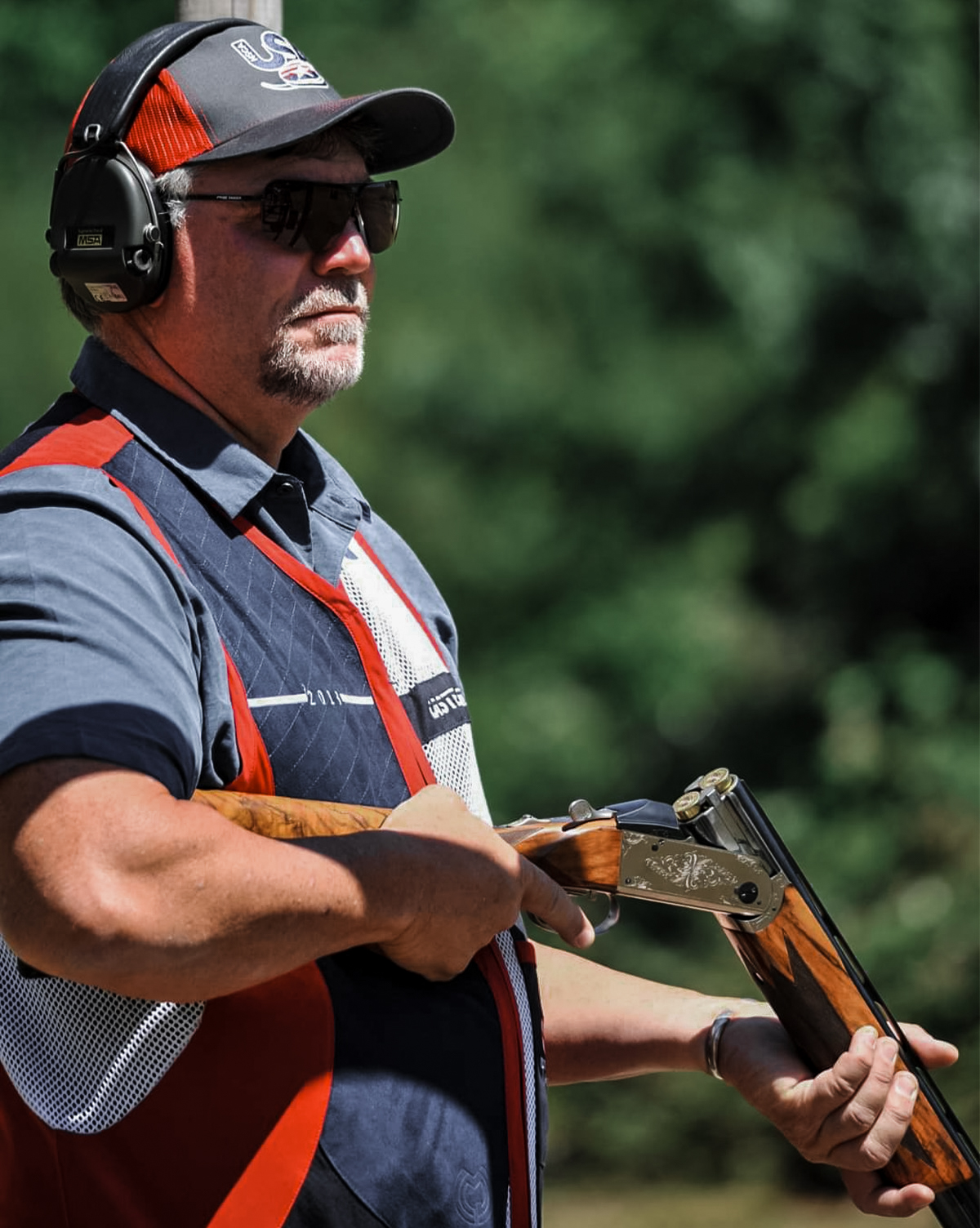
Utah’s John Browning saw the potential of the O/U format and the advantages it could offer. He believed that the narrow sight plane of an O/U would appeal to Americans accustomed to shooting rifles, pumps, and semi-autos.
As a keen trapshooter himself, he believed it would be easier to shoot more precisely with an over/under. Plus, recoil management is easier for a second follow-up shot — the recoil in a side-by-side force the gun up and away from the barrel being fired, while an O/U recoils up.
Browning designed his O/U with the goal of making a gun that was much less expensive to produce than the Boss, Woodward, and Holland & Holland O/Us, but offered the same functional benefits. He saw his “Superposed” as an aspirational gun, one that an ordinary person could afford if they saved and stretched their budget.
In part to reduce production costs, Browning did design his gun with a full-length hinge pin beneath the barrels, so the Superposed is heavier and taller than many other O/Us. It would become a success anyway, and it’s a very shootable gun despite the added height of the frame.
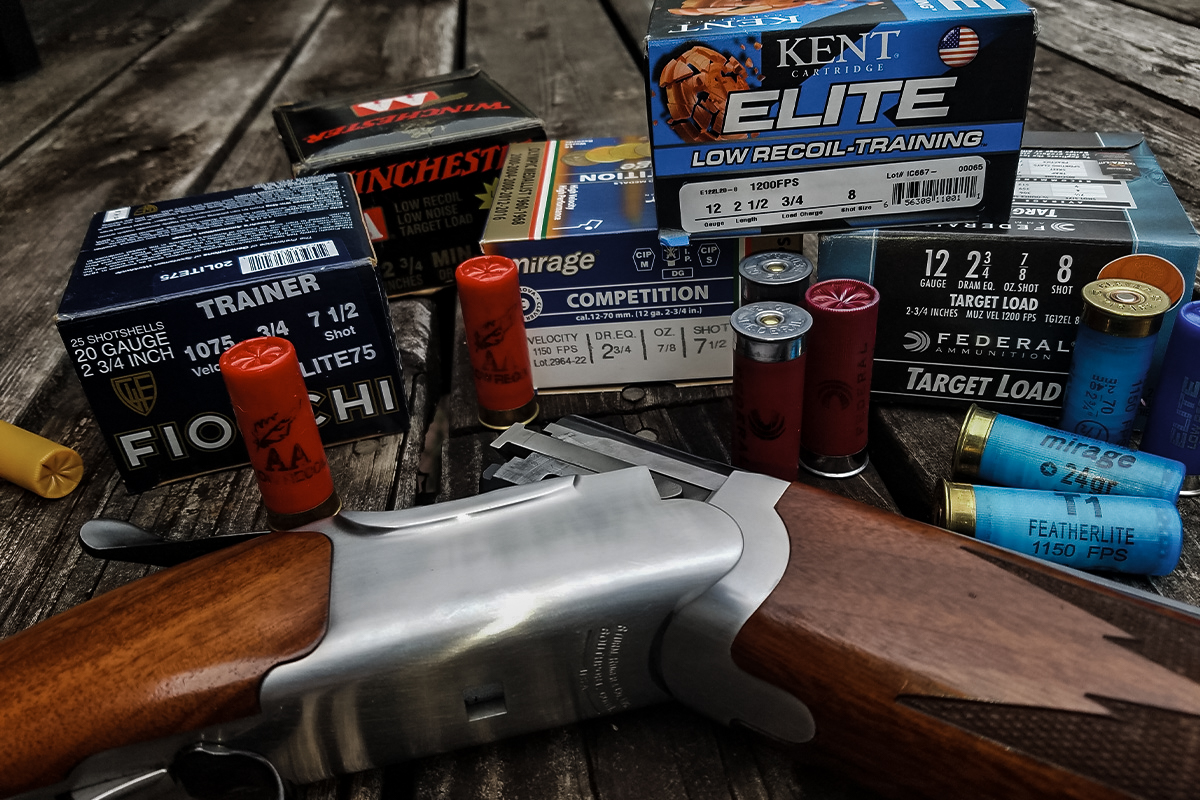
The Superposed did not have an easy birth. Browning died at the Belgian FN plant while working on the gun — literally at the drawing board. His very capable son, Val, finished the project, but by the time it was ready for market in 1931, the world was mired in the Great Depression.
In 1940, the Nazis occupied Belgium, and the FN plant began turning out guns for the German war effort. After liberation, the Germans targeted the factory with V1 and V2 rockets. The Superposed’s time would not truly come until after the war.
But John Browning wasn’t the only gunmaker to recognize the potential of the O/U before WWII. Legendy gunmakers Beretta in Italy and Merkel in Germany had come up with O/U designs in the early 1930s. Like Browning, Beretta introduced a gun that cost much less to build than a British O/U, although the “Sovrapposti” (“Superposed”) was a much more expensive gun than a Browning.
Remington’s short-lived Model 32, with unique sliding-latch action and no midrib, was introduced in the depths of the Depression. It was never a success for Remington, but it would have a surprising post-war rebirth on the Continent.
Marlin also made a budget O/U shotgun, the Model 90, from the 1930s to the 1950s. It was a simple and very rugged gun, with a soft iron frame that often took on a purple cast. The Model 90 has a small, devoted cult following, even today.
GOOD GEAR – Keep Your Hots Hot and Your Colds Cold With the BRCC YETI Reticle Badge Rambler
The Over Under Shotgun Boom

Post-WWII prosperity helped create a strong market for O/Us. After the FN factory was rebuilt overseas, the Superposed found a market in the United States in the prosperous 1950s, becoming exactly the aspirational gun John Browning had envisioned.
At the same time, the Depression and WWII had killed off the great American side-by-side. They were too expensive to produce at the time, and the post-war generation wanted the firepower of repeating shotguns anyway, not their grandad’s double-barrel. However, once those same hunters and shooters learned they could buy a two-barreled gun for trap or skeet that had a sight picture that was a whole lot like the rib of their pump guns and semi-autos, they started saving up for a Superposed.
Beretta introduced the S55 in 1955. It was a much more affordable O/U than the SO, and it kicked off a line of O/Us that has become popular worldwide.
While Beretta has always been the biggest name in Italian gun-making, it’s far from the only Italian gunmaker building O/Us at all price ranges. Perazzi, founded in 1957, became a household name among shooters when one of their guns won gold in the 1964 Olympics. German gunmaker Krieghoff bought the rights to Remington’s Model 32 in 1956 and began making it as the K-32. It would eventually become the K-80, one of the world’s best high-end target guns.
RELATED – Vet-Owned Apex Ammo Drops New TSS Turkey Shells for Spring
Over Under Shotguns on the Hunt

Hunters also began to recognize the advantages of the O/U. It combined the two chokes and between-the-hands balance of a double barrel with the single-barrel sight plane of a pump or semi. While there is always a small market for high-end hunting guns, hunters and shooters of average means wanted O/Us, too.
The amount of handwork and fitting that goes into a break-action gun meant over under shotguns would always cost more than pumps and semi-autos.To keep labor costs down, gunmakers like Browning, Winchester, and Weatherby turned to Japan, where labor costs were lower.
Winchester made the 101 in Japan. Browning kept high-grade Superposed production in Belgium and introduced a simplified, made-in-Japan version called the Citori, which celebrates its 50th birthday this year and has become a classic in its own right.
Browning wasn’t the only gun company to make this move. In the 1960s and 1970s, several manufacturers began producing guns in Japan. Winchester was already making the 101 in Japan, and while anything produced there in the 1960s and 1970s had to overcome the perception of cheapness in the U.S., the guns were quite good, and eventually, they won over American hunters and shooters.

The U.S., however, never became a major producer of over under shotguns. From 1973 to 1982, Remington sold the reintroduced and improved Model 32 as the 3200, and it offered a couple of other guns, the Peerless and the Ideal, which failed to live up to their names.
Ruger’s Red Label, introduced in 1977, had a much longer run — it was in production until 2011. The Red Label had some interesting features: a mechanical trigger that, unlike those in many O/Us, did not require the recoil of the first shot to reset the hammer for second. And it had a removable midrib, so you could lighten the barrels slightly to make the gun livelier.
Kolar, in Wisconsin, builds an excellent high-end O/U that isn’t much known outside of target shooting circles.
Over Under Shotguns Still Going Strong
Today, almost 100 years after Browning introduced the Superposed, there is a wide selection of over under shotguns for almost any purpose or budget.
Turkey has become the new Japan for gunmakers looking to get the most labor for their money. Turkish-made over/unders range from very inexpensive and serviceable guns priced under $1,000 to some very nice guns with excellent walnut furniture and engraving. The guns from CZ-USA, to name one maker, have become well-known and well-regarded as solid, reliable value shotguns.
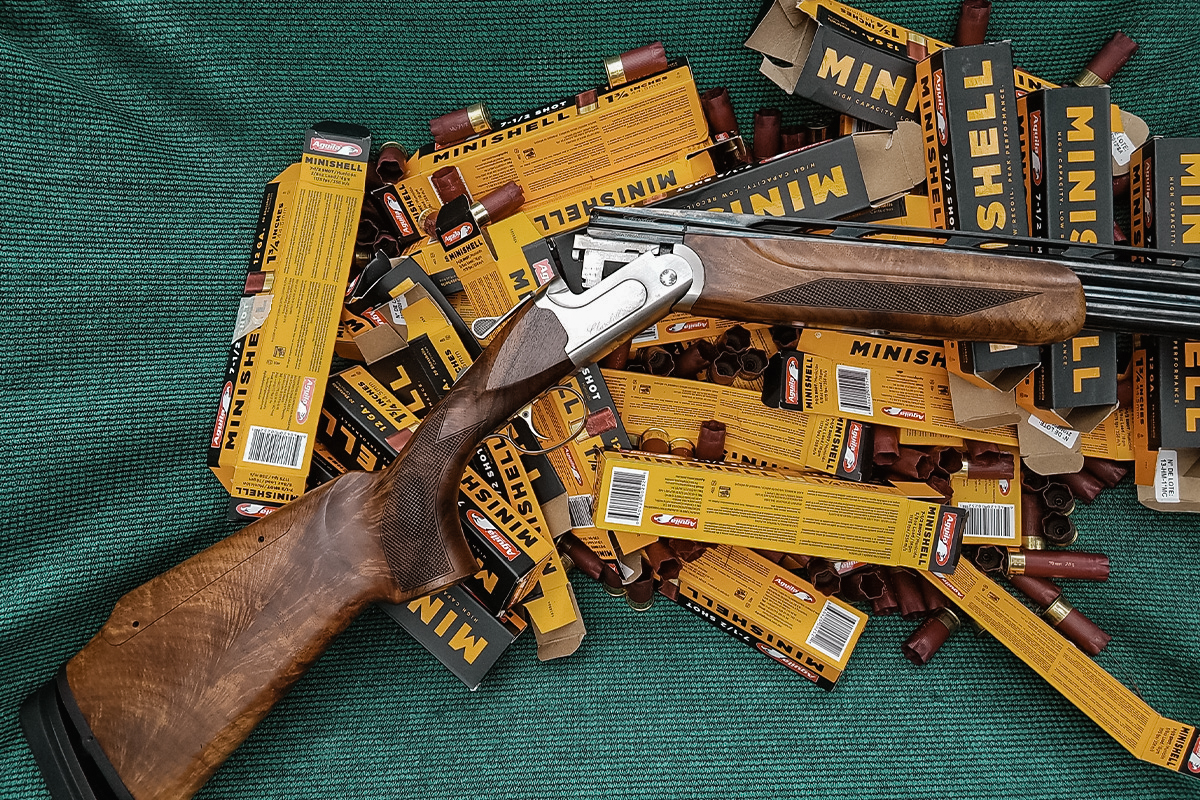
While O/Us still require precise manufacture, because the parts have to fit exactly, they don’t have to be made by hand any longer. Modern CNC production methods are capable of producing astonishingly tight tolerances.
Even some very high-end British and Italian O/Us like the Gallyon or the Fabbri can be almost entirely machine-made. Their prices can still reach $100,000 or more, but that’s still a fraction of what it might cost to build such a gun by hand.
Russia has produced some excellent shotguns, most famously some Baikal O/Us made in the 1960s that helped Russian national team shooters compile several successes. Russian gunmakers can also build elegant, well-decorated guns. However, the Russian guns imported to this country 10 or 15 years ago under the Remington “Spartan” brand were budget guns more along the lines of what you might expect a Russian shotgun to be: rugged, serviceable, clunky, and roughly finished.

Made in the city of Izhevsk, the center of Russia’s gun-making region, the Spartan guns were imported to meet a market for inexpensive break-action guns at about the same time gunmakers were beginning to bring Turkish guns into the U.S. Consumers voted with their wallets for Turkish-manufactured guns, which tended to be more refined.
Manufacturers are also bringing new ideas to the basic O/U design all the time.
Beretta’s Ultraleggero lightweight O/U has a skeletonized steel frame with polymer inserts that shave weight off the gun. Benelli’s 828U has an effective in-stock recoil reducer and is designed in such a way that the stock can be easily shimmed to change its dimensions for a custom fit.
The O/U isn’t as old as you think, and clever designers will continue to find ways to keep it fresh.
READ NEXT – The DP-12 Shotgun: A Wild Design That Works





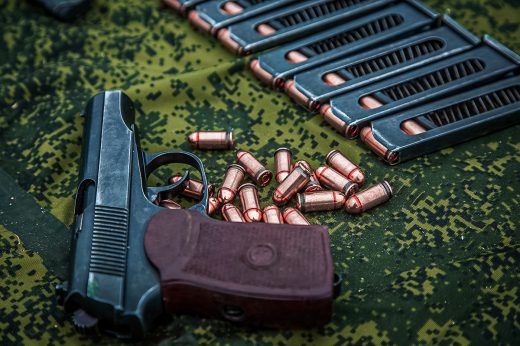
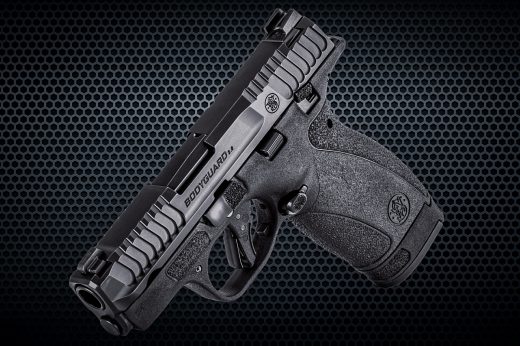



Comments